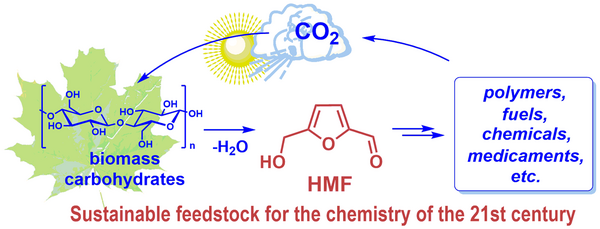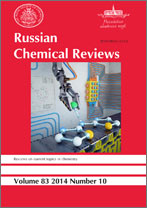|
This article is cited in 94 scientific papers (total in 94 papers)
Conversion of plant biomass to furan derivatives and sustainable access to the new generation of polymers, functional materials and fuels
V. M. Chernysheva, O. A. Kravchenkoa, V. P. Ananikovb
a South-Russia State Technical University, Novocherkassk
b N.D. Zelinskii Institute of Organic Chemistry, Russian Academy of Sciences

Abstract:
5-Hydroxymethylfurfural (HMF) is an important versatile reagent, a so-called platform chemical, that can be produced from plant biomass compounds: hexose carbohydrates and lignocellulose. In the near future, HMF and its derivatives could become an alternative feedstock for the chemical industry and replace, to a great extent, non-renewable sources of hydrocarbons (oil, natural gas and coal). This review analyzes recent advances in the synthesis of HMF from plant feedstocks and considers the prospects for the use of HMF in the production of monomers and polymers, porous carbon materials, engine fuels, solvents, pharmaceuticals, pesticides and chemicals. The most important HMF derivatives considered in the review include 2,5-furandicarboxylic acid, 2,5-diformylfuran, 2,5-bis(hydroxymethyl)furan, 2,5-bis(aminomethyl)furan, 2,5-dimethylfuran, 2,5-dimethyltetrahydrofuran, 2,5-bis(methoxymethyl)furan, and 5-ethoxymethylfurfural. In the nearest future, a significant extension of the HMF application is expected, and this platform chemical may be considered a major source of carbon and hydrogen for the chemistry of the 21st century.
The bibliography includes 408 references.
Received: 19.10.2016
Citation:
V. M. Chernyshev, O. A. Kravchenko, V. P. Ananikov, “Conversion of plant biomass to furan derivatives and sustainable access to the new generation of polymers, functional materials and fuels”, Russian Chem. Reviews, 86:5 (2017), 357–387
Linking options:
https://www.mathnet.ru/eng/rcr4161https://doi.org/10.1070/RCR4700 https://www.mathnet.ru/eng/rcr/v86/i5/p357
|


|






 Contact us:
Contact us: Terms of Use
Terms of Use
 Registration to the website
Registration to the website Logotypes
Logotypes







 Citation in format
Citation in format 
